Key Takeaways
- Survival gardening is a practical way to ensure food security in emergencies.
- Focus on calorie-dense, nutrient-rich crops like potatoes, beans, and squash.
- Use companion planting to maximize space and improve yields.
- Learn preservation techniques to store food for long-term use.
- Start small and expand your garden as you gain experience.
Introduction
Did you know that over 40% of Americans don’t have enough savings to cover a $1,000 emergency, and 1 in 8 households face food insecurity? In a crisis, access to food can become a major challenge, leaving many vulnerable. That’s where survival gardening comes in. By growing your own food, you can take control of your family’s nutrition and security, even when disaster strikes.
Whether it’s a natural disaster, economic downturn, or supply chain disruption, a well-planned survival garden ensures you’re prepared. In this guide, we’ll explore the 10 essential crops you need to grow for a sustainable survival garden.
From calorie-dense potatoes to protein-packed beans, these crops are easy to grow, store well, and provide long-term resilience. Whether you’re a beginner or an experienced gardener, this expert advice will help you build a garden that thrives in any situation. Let’s dig in and prepare for the future—one seed at a time.
Why Survival Gardening Matters
The Importance of Self-Sufficiency
In uncertain times, relying on grocery stores or supply chains can be risky. Survival gardening empowers you to take control of your food supply. It’s not just about growing food—it’s about ensuring long-term sustainability and resilience. By cultivating your own garden, you reduce dependence on external systems and gain peace of mind knowing you can provide for your family, no matter what happens.
Benefits of Survival Gardening
- Cost-effective: Save money by growing your own food. Instead of spending on expensive store-bought produce, you can invest in seeds and tools that yield fresh, organic vegetables year after year. Over time, the savings add up, making survival gardening a smart financial choice.
- Healthier options: Avoid pesticides and chemicals. When you grow your own food, you control what goes into the soil and onto your plants. This means you can enjoy nutrient-rich, chemical-free produce that’s better for your health and the environment.
- Emergency preparedness: Be ready for any crisis, from natural disasters to economic downturns. A survival garden ensures you have a reliable food source when stores run empty or supply chains break down. It’s a practical step toward self-reliance and security in unpredictable times.
By embracing survival gardening, you’re not just planting seeds—you’re growing a safer, healthier, and more resilient future.
10 Essential Crops for Survival Gardening
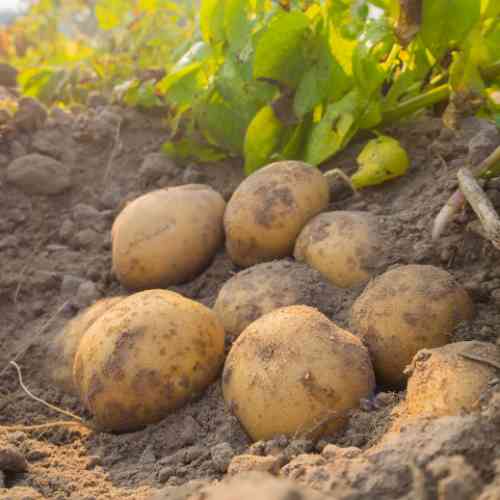
1. Potatoes
Potatoes are a calorie-dense staple that can feed your family for months. They’re easy to grow, store well, and can be used in countless recipes, from mashed potatoes to soups.
How to Grow Potatoes
- Step 1: Choose a sunny spot with well-drained soil. Potatoes love sunlight but hate soggy roots.
- Step 2: Use seed potatoes (not grocery store ones) for the best results. Cut them into chunks, each with at least one “eye.”
- Step 3: Plant the chunks about 4 inches deep and 12 inches apart. Cover with soil and water lightly.
- Step 4: As the plants grow, mound soil around the stems to protect the tubers from sunlight.
- Step 5: Harvest when the foliage turns yellow and dies back. Dig carefully to avoid damaging the potatoes.
Pro Tip: Store potatoes in a cool, dark place (like a root cellar) to prevent sprouting. Avoid storing them near onions, as they can spoil faster.
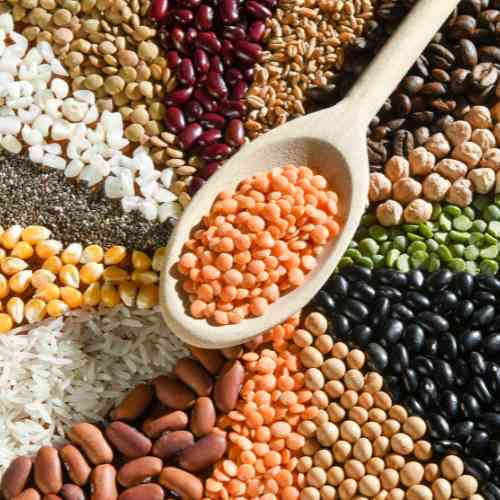
2. Beans
Beans are a protein powerhouse and a must-have for any survival garden. They’re also great for your soil because they fix nitrogen, making the ground richer for other plants.
Types of Beans to Grow
- Pole beans: These grow vertically, saving space. Perfect for small gardens or trellises.
- Bush beans: These grow in compact bushes and are ideal for containers or small plots.
How to Grow Beans
- Step 1: Plant seeds directly in the soil after the last frost. Beans don’t like being transplanted.
- Step 2: Space seeds about 4-6 inches apart and 1 inch deep.
- Step 3: Water regularly but avoid overwatering. Beans prefer moist, not soggy, soil.
- Step 4: Harvest when the pods are firm and snap easily. Pick often to encourage more growth.
“Beans are the backbone of any survival garden. They’re nutritious, easy to grow, and store well.”
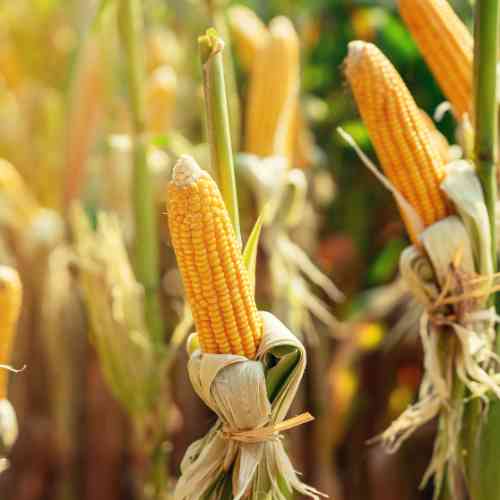
3. Corn
Corn is a high-yield crop that provides both food and fodder. It’s also a great companion plant for beans and squash, forming the classic “Three Sisters” garden.
Growing Tips
- Step 1: Plant corn in blocks, not rows, to improve pollination. Space seeds about 9-12 inches apart.
- Step 2: Corn needs plenty of water, especially during dry spells. Water deeply once a week.
- Step 3: Fertilize with compost or a balanced fertilizer to support rapid growth.
- Step 4: Harvest when the kernels are plump and release a milky liquid when pierced.
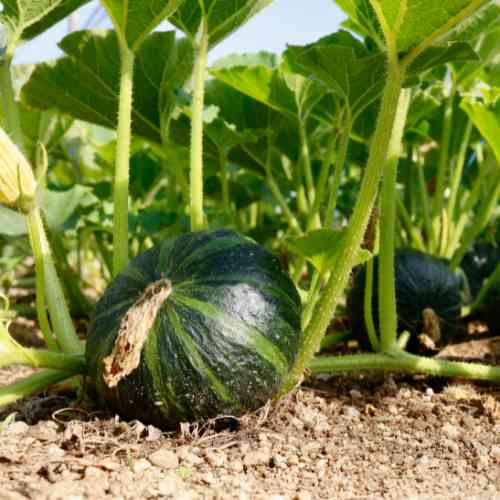
4. Squash
Squash is a nutrient-rich crop that stores well and can be used in soups, stews, and baked dishes.
Varieties to Consider
- Winter squash: These have a long shelf life and include varieties like butternut and acorn squash.
- Summer squash: These grow quickly and include zucchini and yellow squash.
How to Grow Squash
- Step 1: Plant seeds in warm soil after the last frost. Squash loves heat.
- Step 2: Space plants about 3 feet apart to give them room to spread.
- Step 3: Water at the base of the plant to avoid wetting the leaves, which can lead to mildew.
- Step 4: Harvest summer squash when they’re small and tender. For winter squash, wait until the rind is hard.
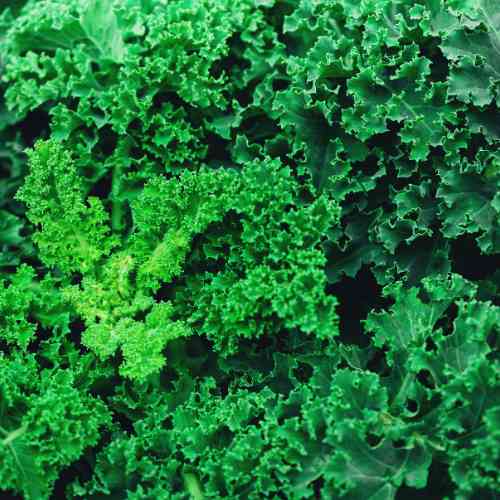
5. Kale
Kale is a cold-hardy superfood packed with vitamins A, C, and K. It’s perfect for year-round gardening, even in cooler climates.
Growing Conditions
- Step 1: Plant kale in early spring or late summer. It thrives in cooler temperatures.
- Step 2: Choose a spot with well-drained soil and partial to full sun.
- Step 3: Water regularly to keep the soil moist but not waterlogged.
- Step 4: Harvest outer leaves as needed, allowing the center to continue growing.
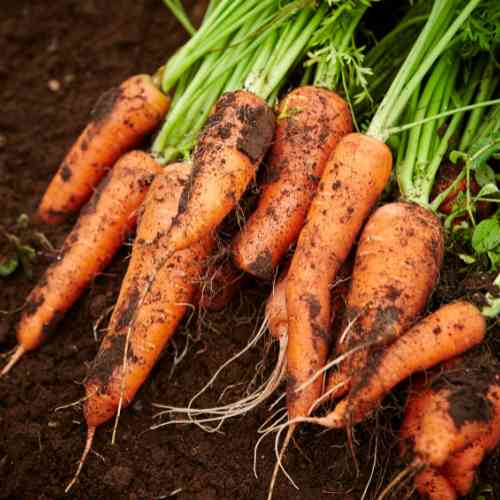
6. Carrots
Carrots are a root vegetable rich in beta-carotene, which is great for eye health. They’re also easy to store for long periods.
Tips for Success
- Step 1: Plant seeds in loose, sandy soil. Heavy soil can cause misshapen carrots.
- Step 2: Thin seedlings to about 2 inches apart to prevent overcrowding.
- Step 3: Water consistently to keep the soil evenly moist.
- Step 4: Harvest when the tops of the carrots are about 1 inch in diameter.
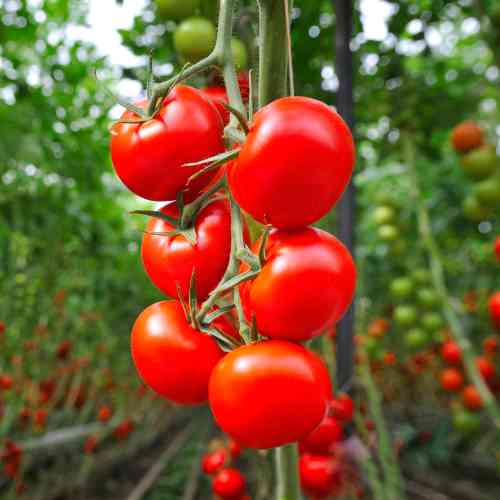
7. Tomatoes
Tomatoes are a versatile crop that can be eaten fresh, canned, or dried. They’re a must-have for any survival garden.
Growing Requirements
- Step 1: Plant in full sun and provide support like cages or stakes for the vines.
- Step 2: Water consistently to prevent cracking, but avoid wetting the leaves.
- Step 3: Fertilize with compost or a balanced fertilizer every few weeks.
- Step 4: Harvest when the tomatoes are fully colored and slightly soft to the touch.
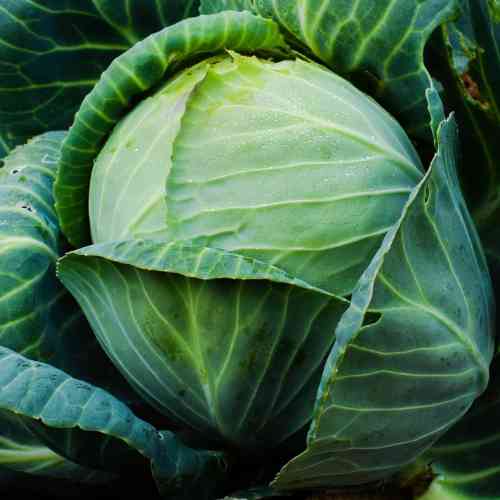
8. Cabbage
Cabbage is a long-lasting crop that’s perfect for fermenting (think sauerkraut) and storing.
How to Grow
- Step 1: Plant in cool weather, either early spring or late summer.
- Step 2: Space plants about 12-24 inches apart to give them room to grow.
- Step 3: Protect from pests like cabbage worms by using row covers or organic pesticides.
- Step 4: Harvest when the heads are firm and dense.
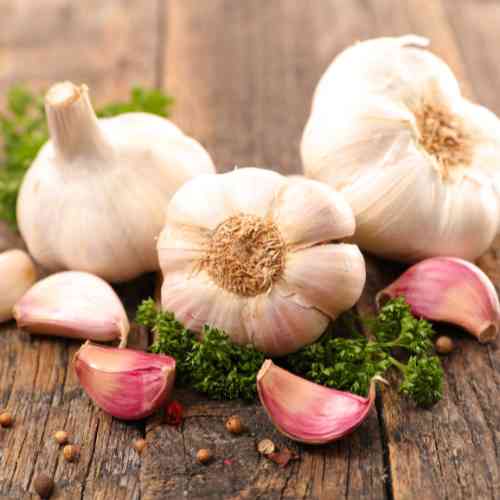
9. Garlic
Garlic is a natural pest repellent and adds incredible flavor to meals. It’s also easy to grow and store.
Planting Tips
- Step 1: Plant cloves in the fall, about 4-6 weeks before the first frost.
- Step 2: Space cloves 6 inches apart and 2 inches deep, with the pointed end up.
- Step 3: Mulch heavily to protect the bulbs over winter.
- Step 4: Harvest in summer when the lower leaves turn brown.
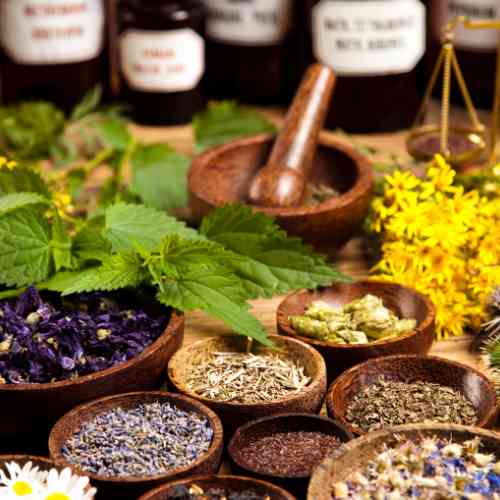
10. Herbs (Basil, Rosemary, Thyme)
Herbs are easy to grow and add flavor, nutrition, and even medicinal benefits to your meals.
Benefits of Growing Herbs
- Medicinal properties: Many herbs, like thyme and rosemary, have natural healing qualities.
- Pest-repellent qualities: Herbs like basil can deter pests from your garden.
How to Grow Herbs
- Step 1: Plant in well-drained soil with plenty of sunlight.
- Step 2: Water regularly but avoid overwatering. Most herbs prefer slightly dry conditions.
- Step 3: Harvest leaves as needed, but avoid taking more than one-third of the plant at a time.
Table: 10 Essential Survival Gardening Crops
| Crop | Best Planting Time | Spacing | Sunlight | Water Needs | Harvest Time |
| Potatoes | Early spring | 12 inches apart | Full sun | Moderate | 70-120 days |
| Beans | After last frost | 4-6 inches apart | Full sun | Regular, not soggy | 50-60 days |
| Corn | Late spring | 9-12 inches apart | Full sun | Consistent | 60-100 days |
| Squash | After last frost | 3 feet apart | Full sun | Regular, at base | 50-70 days (summer), 80-120 days (winter) |
| Kale | Early spring or fall | 12-18 inches apart | Partial to full sun | Regular | 50-75 days |
| Carrots | Early spring or fall | 2 inches apart | Full sun | Consistent | 70-80 days |
| Tomatoes | After last frost | 24-36 inches apart | Full sun | Consistent | 60-85 days |
| Cabbage | Early spring or fall | 12-24 inches apart | Full sun | Regular | 70-120 days |
| Garlic | Fall (before frost) | 6 inches apart | Full sun | Moderate | 8-9 months |
| Herbs | Spring or early summer | 12-18 inches apart | Full sun | Light, avoid overwatering | As needed |
Top 5 Tips for Starting a Survival Garden
- Choose the right location: Ensure your garden gets at least 6-8 hours of sunlight daily and has easy access to water. A sunny, well-drained spot is key to healthy plant growth.
- Start small: Focus on growing a few easy crops like potatoes, beans, and kale. This helps you learn the basics without feeling overwhelmed or wasting resources.
- Use quality soil: Invest in compost and organic matter to enrich your soil. Healthy soil means healthier plants and better yields for your survival garden.
- Plan for storage: Learn preservation techniques like canning, drying, and root cellaring. This ensures your harvest lasts through the winter or during emergencies.
- Rotate crops: Change what you plant in each area yearly to prevent soil depletion and reduce pest problems. Crop rotation keeps your garden productive and sustainable.
Essential Tools for Survival Gardening
- Hand trowel: A hand trowel is perfect for planting seeds, transplanting seedlings, and removing weeds. Its compact size makes it easy to handle, ensuring precise work in tight spaces.
- Pruning shears: Use pruning shears to trim overgrown branches, dead leaves, and stems. Sharp blades make clean cuts, promoting healthier plant growth and preventing disease.
- Watering can: A watering can ensures consistent hydration for your plants. Its spout allows you to control water flow, preventing overwatering and keeping your garden thriving.
Conclusion
Survival gardening is more than just a hobby—it’s a lifeline in uncertain times. By growing your own food, you take control of your family’s nutrition, save money, and build resilience against emergencies. The 10 essential crops we’ve covered—potatoes, beans, corn, squash, kale, carrots, tomatoes, cabbage, garlic, and herbs—are easy to grow, store well, and provide the nutrients you need to thrive.
With the right tools, like a hand trowel, pruning shears, and watering can, you can create a sustainable garden that feeds your family year-round. Remember, the key to success is planning, patience, and consistent care. Start small, learn as you go, and expand your garden over time.
By embracing survival gardening, you’re not just planting seeds—you’re growing security, health, and peace of mind. Whether you’re preparing for a crisis or simply aiming for self-sufficiency, your garden will be a source of strength and nourishment. So, grab your tools, dig in, and start building your survival garden today!
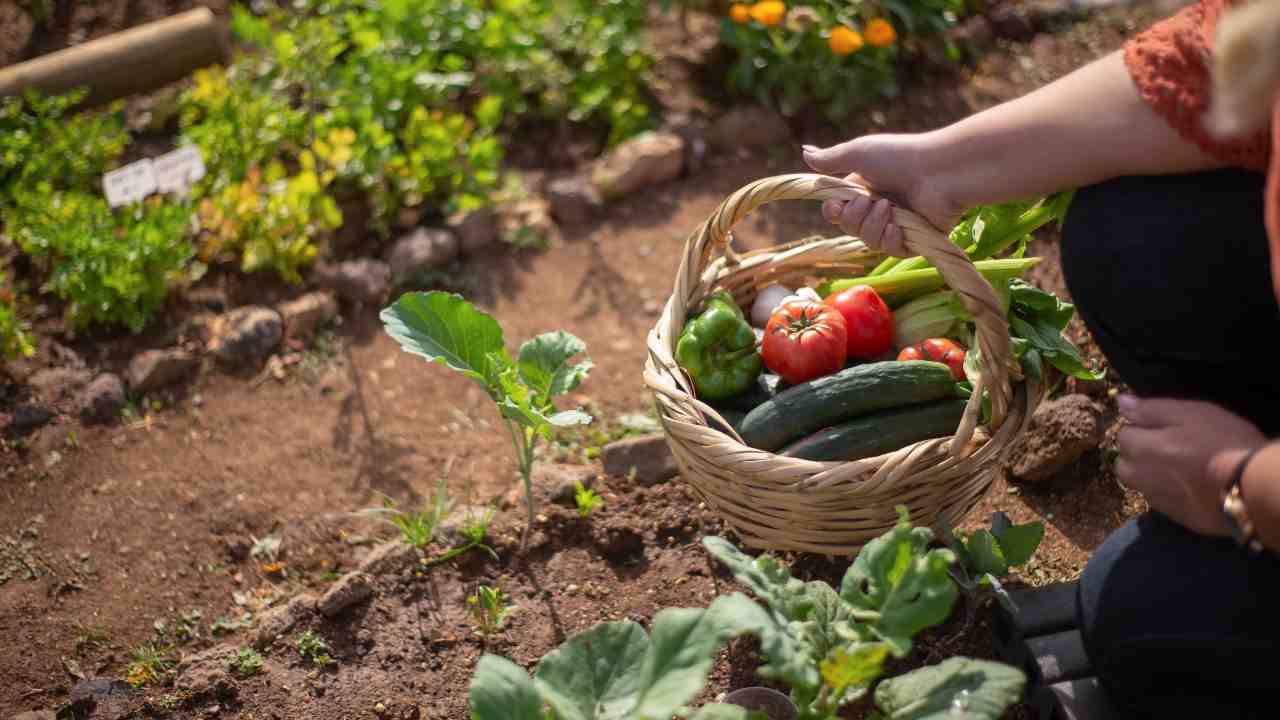
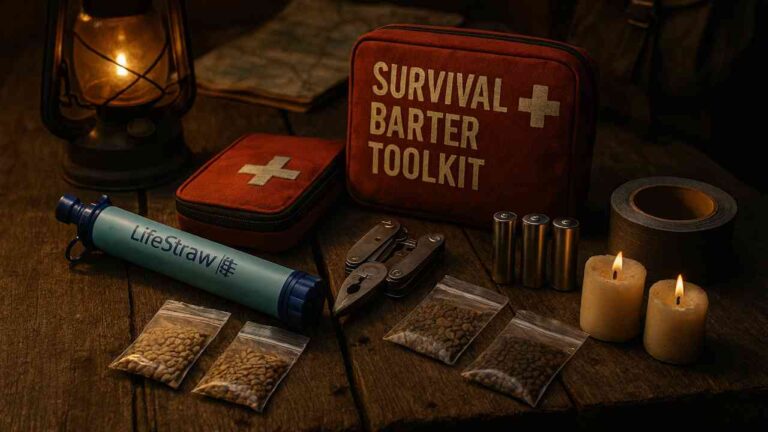

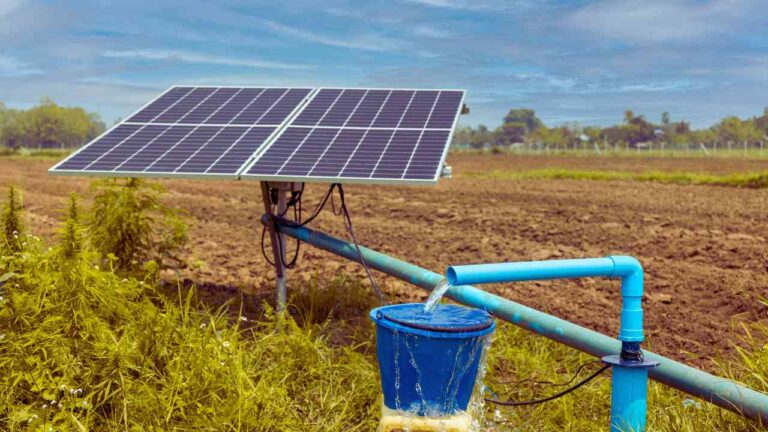




[…] DIY options not only protect your skin but are also safe for the environment—making them a smart choice for campers, hikers, and survivalists who want to stay bite-free […]